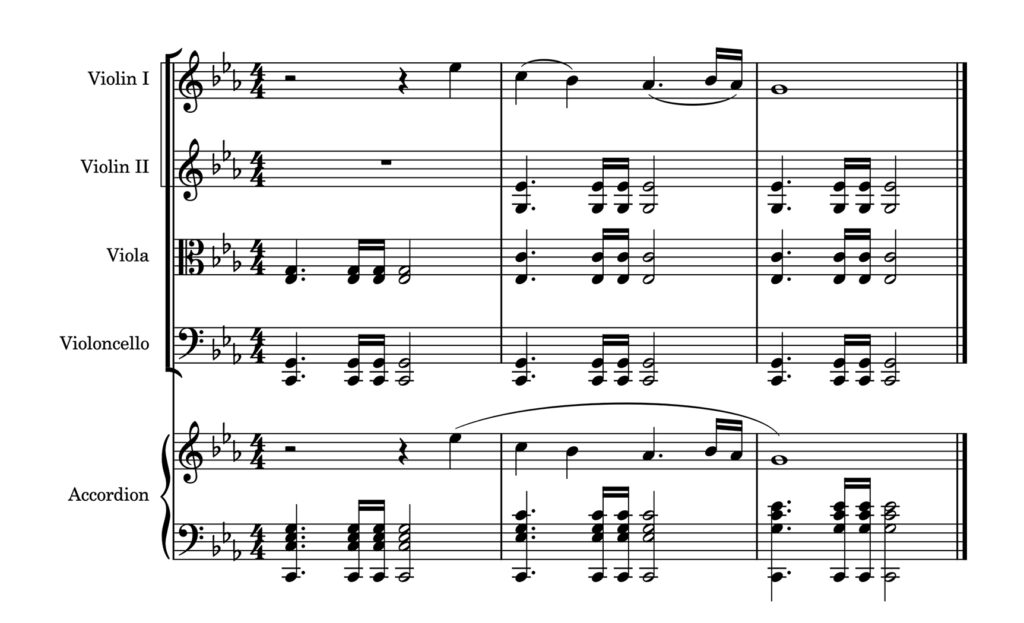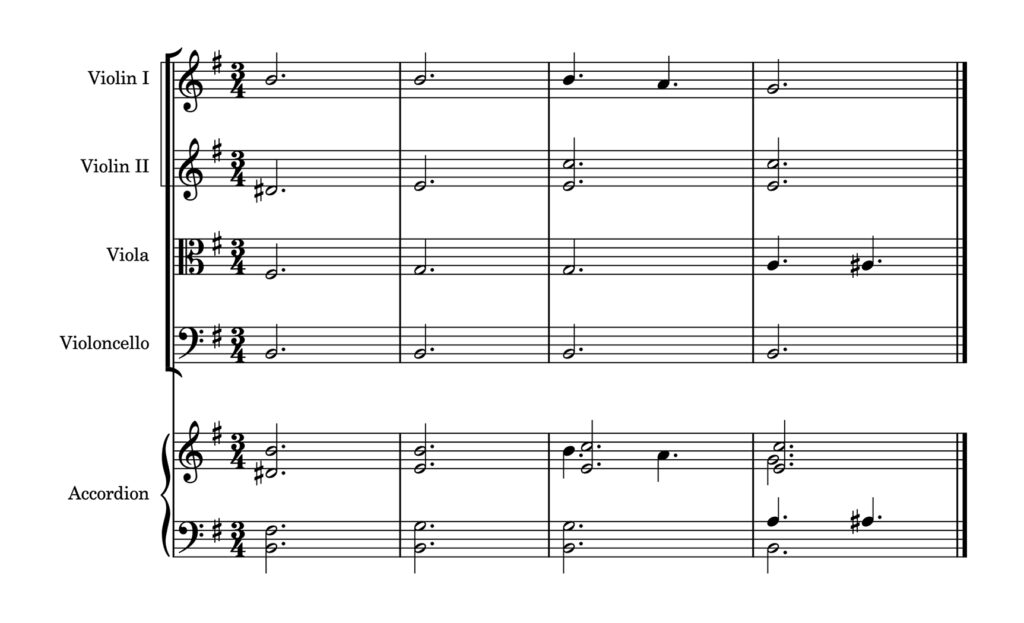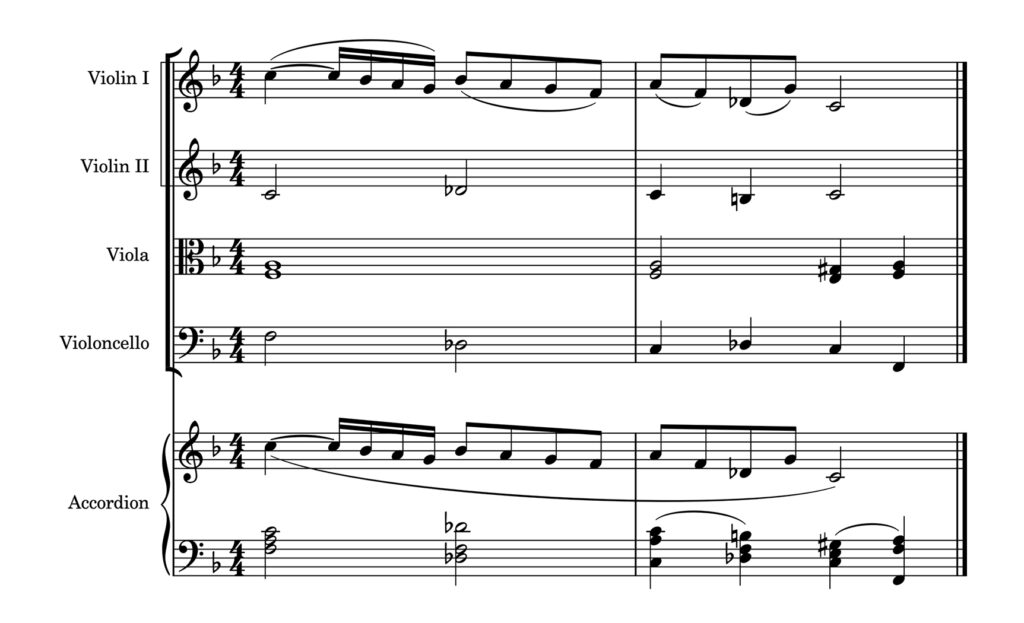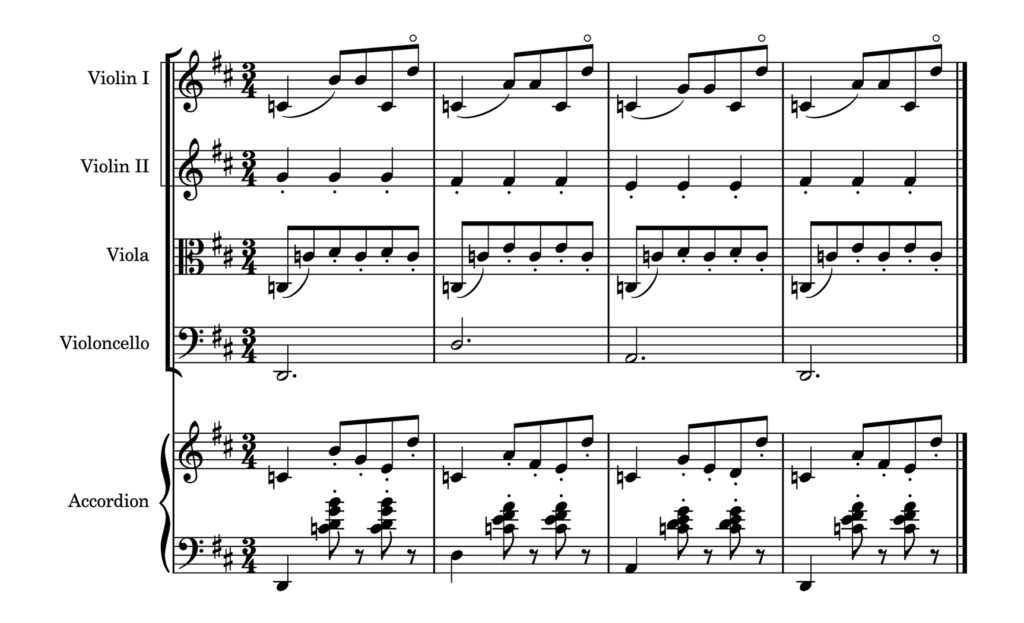Re-orchestrating or re-arranging music from one instrumental setting to another is an interesting job that presents slightly different challenges than simply writing a brand new piece of music for a particular set of instruments.
On the one hand, you have the existing music that is (presumably) written with the particular requirements, possibilities and of course also constraints of that group of instruments. Presuming, again, that the existing music takes advantage of idiomatic playing techniques and phrasings, as well as rhythmic or even melodic structures that lend themselves well to the instruments it is written for, that might mean that it is far from easy or simple to transfer the music over to another instrument or set of instruments.
Even going between two different keyboard instruments, such as a piano, an organ or a harpsichord, would most likely involve a number of creative decisions – perhaps even parts that are impossible to transcribe or perform in an effectively identical way on the new instrument.
In fact, let’s dwell on those three particular instruments just a little more. Superficially, they might appear quite similar since they are all played on with keyboards (in the case of the organ, often several – including at least one pedalboard). However, they all create and sustain sound in very different ways.
Idiomatic harpsichord music would take into account that sustaining chords is more or less impossible, therefore relying more on arpeggiated or broken chords, for example. The piano is not only both louder and softer than the harpsichord (which explains why its progenitor was called the fortepiano, literally the “loud-soft”!) but it can sustain chords effortlessly. And pipe organs, well, they are literally in a class all of their own with far greater possibilities than the other two, but also its own particular constraints and idiosyncracies.
In the last couple of months, I have been working on transcribing and arranging string quartet music for accordion. The first issue was simply getting the original music from the score into my notation software. I had some help from a smartphone-based sheet music scanning app that produced results ranging all the way from quite accurate to quite terrible, and unfortunately more often leaning toward the latter.
Getting the parts in digital, editable form took quite a number of hours, but that was only half – or maybe two-thirds – of the job done. Now I had to actually re-arrange the music for all the reasons we have already established. I would after all like to end up with accordion music when I’m done, rather than simply a bunch of string music crammed onto an accordion staff.
Here are a few examples of how the adapted accordion part corresponds to the original string quartet parts. All of my transcriptions will also be reviewed by a brilliant accordionist and good friend of mine. After all, I am still only a beginner when it comes to this excellent instrument, and I have much to learn about idiomatic writing for accordion.

The first example is quite straightforward. A simple melody on top of a somber, homorhythmic accompaniment. To add a little flavour and development, I moved the chord up one step each successive bar from root position to first and then second inversion.

The second example is also rather simple. A clear, almost frozen chord sequence with a simple counterline that emerges as if through a haze. In the left hand, I chose to single out the last note of the counterline (in the fourth bar) even though it is a dotted half note and as such could be joined with the others.

The third example ups the complexity. The melody is easy to simply copy and paste over. Instead of using the shorter slurs to indicate bow strokes, a longer slur in the right hand indicates the musical phrase. In transcribing the left hand accompaniment, I deliberately opted to not include every note to create a lighter, more transparent sound.
Even though the three instruments in a string quartet belong to the same instrument family, I picture the string quartet as having a more varied sound quality than a single accordion. Therefore, I chose to specifically alter between the viola’s two notes in each new chord, except for the two last chords where the two violins both play the melody’s C.

The fourth example is much more of an adaptation of the idea of the original music rather than the exact string parts themselves. The string accompaniment sounds like classic “om-pa-pa” waltz music, so I simplified the left hand into that. The chords are made up of notes present in violin and viola parts.
The accordion’s right hand is visibly based on the first violin part, but again I decided to make it a little more interesting to play for the accordionist. The original violin part is rather ingeniously written, utilizing various playing techniques to transform fairly dull music into something varied and fun. They are, of course, not available on the accordion so they have to be substituted for something else.

One comment
Comments are closed.